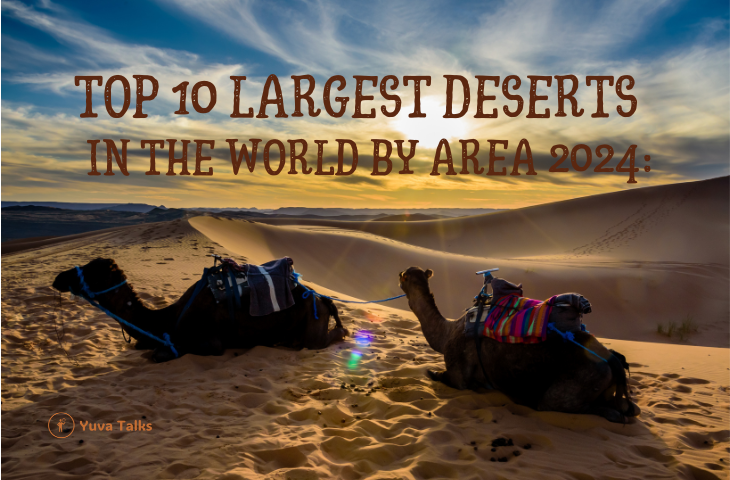In this article, we’ll explore the top 10 largest desert areas on Earth. The Antarctica Desert claims the title of the largest desert globally, covering an expansive 14,200,000 square kilometers in Antarctica. Interestingly, while water dominates Earth’s surface with a ratio of 2:1 over land, deserts constitute a significant portion, spanning 33% of the planet’s land area and 9.5% of its total surface. Let’s delve into the fascinating world of these vast, arid landscapes.
What is a desert?
Deserts are typically arid areas characterized by scarce precipitation, usually less than 12 inches annually. They form when prolonged drought conditions arise from shifts in regional climate patterns.
Types of deserts in the world:
There are 4 types of deserts in the world
- Semi-arid deserts
- Cold deserts
- Coastal deserts
- Hot & dry deserts
10 Largest Deserts in the World By Area
Antarctica is the world’s largest desert, spanning roughly 14.2 {14,200,000 sq. km}. million square kilometers.
| S. No. | Name | Type | Location | Area (in sq.km) | Area (in sq.mi) |
| 1 | Antarctica Desert | Polar ice and Tundra | Antarctica | 14,200,000 | 5,482,651 |
| 2 | Arctic Desert | Polar ice and Tundra | Eastern Europe Northern America Northern Asia Northern Europe | 13,900,000 | 5,366,820 |
| 3 | Sahara Desert | Subtropical | Eastern Africa Middle Africa Northern Africa Western Africa | 9,200,000 | 3,552,140 |
| 4 | Great Australian | Subtropical | Australia | 2,700,000 | 1,042,476 |
| 5 | Arabian Desert | Subtropical | Western Asia | 2,330,000 | 899,618 |
| 6 | Gobi Desert | Cold winter | Eastern Asia | 1,295,000 | 500,002 |
| 7 | Kalahari Desert | Subtropical | Southern Africa | 900,000 | 347,492 |
| 8 | Patagonian Desert | Cold winter | South America | 673,000 | 259,847 |
| 9 | Syrian Desert | Subtropical | Western Asia | 500,000 | 193,051 |
| 10 | Great Basin | Cold winter | North America | 492,098 | 190,000 |

Area (km²): 14,000,000
Location: Antarctica
Antarctica, with a population of fewer than 5000, holds the title of the world’s largest desert, covering approximately 14,000,000 square kilometers. Situated at the South Pole, this continent boasts several remarkable distinctions—it is renowned as the coldest, driest, and windiest place on Earth. Additionally, Antarctica boasts the highest average elevation of all continents and receives a mere 20 mm of rainfall annually.
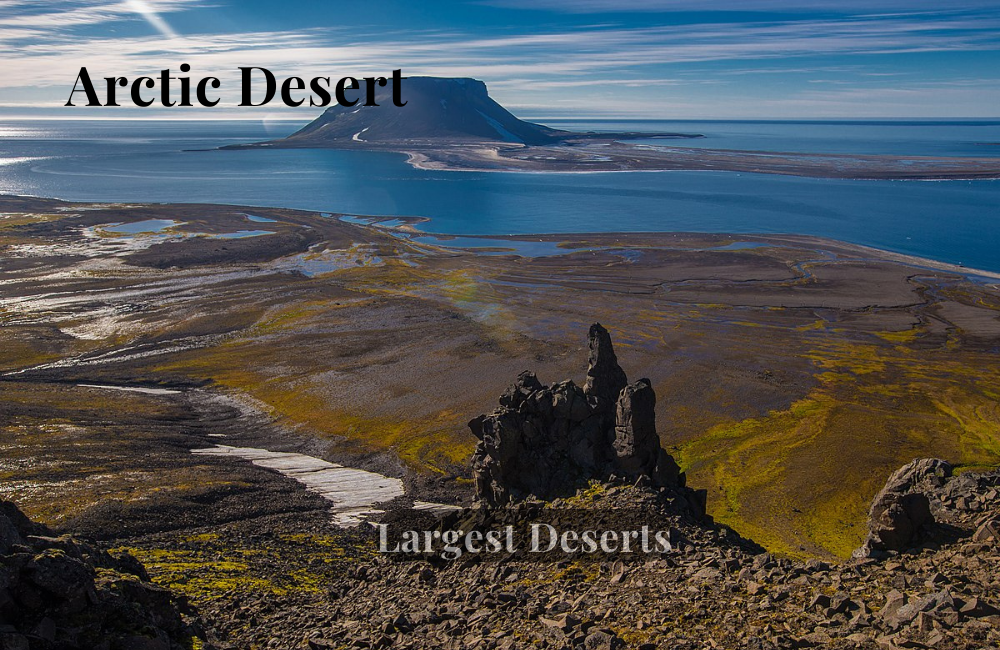
Area (km²): 13,985,000
Location: Arctic Ocean islands north of Norway and Russia
The second largest desert on Earth is located in the northern polar region, spanning about 3000 km along the Arctic Ocean. Despite receiving around 50cm of rainfall annually, it shares many environmental and climatic characteristics with Antarctica.

Area (km²): 9,200,000
Location: North Africa
This desert is known as the “Greatest Desert” and holds the title of being the largest hot desert on Earth. It is located in the northern region of the African continent, spanning Eastern, Middle, Northern, and Western Africa.
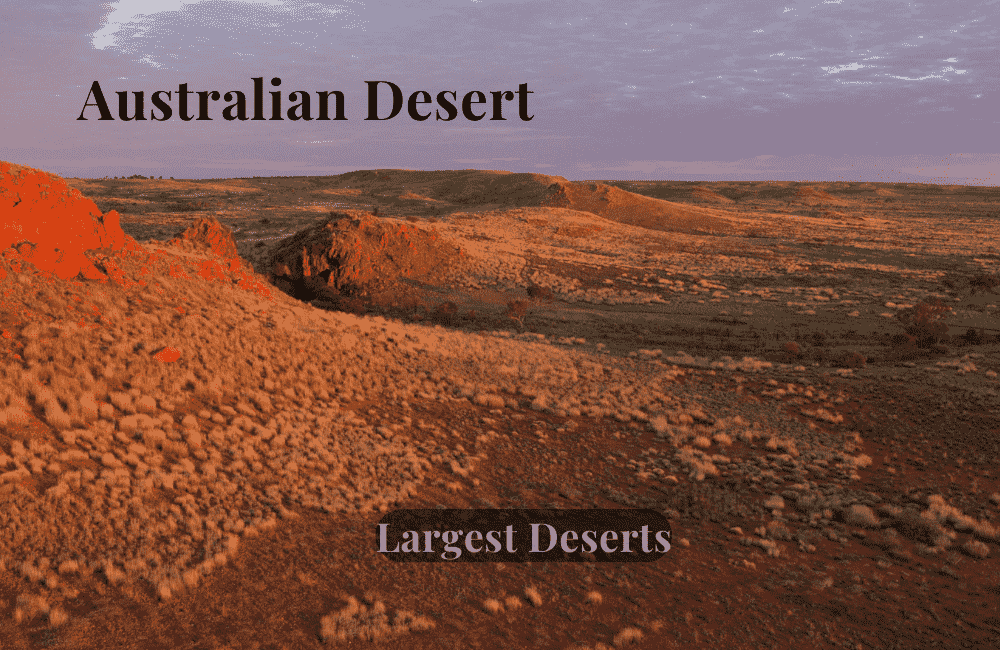
Area (km²): 2,700,000
Location: Australia
The Great Victoria Desert spans 2.7 million sq. km, ranking as the world’s fourth largest desert, covering about 18% of Australia’s landmass. Australia is renowned as the driest continent globally.

Area (km²): 2,330,000
Location: Middle East
This expansive desert, ranking fifth globally, sprawls across the Arabian Peninsula in western Eurasia. At its heart lies Saudi Arabia.

Area (km²): 1,295,000
Location: Eastern Asia
With an expanse of 1,295,000 square kilometers, the Gobi Desert stands as one of the world’s largest deserts. Situated in East Asia, it sprawls across vast regions of Northern and Southern Mongolia. Remarkably, it ranks as the third largest cold desert globally. The Gobi Desert boasts a unique ecosystem, hosting rare species like the elusive snow leopards and the distinctive Bactrian camels.
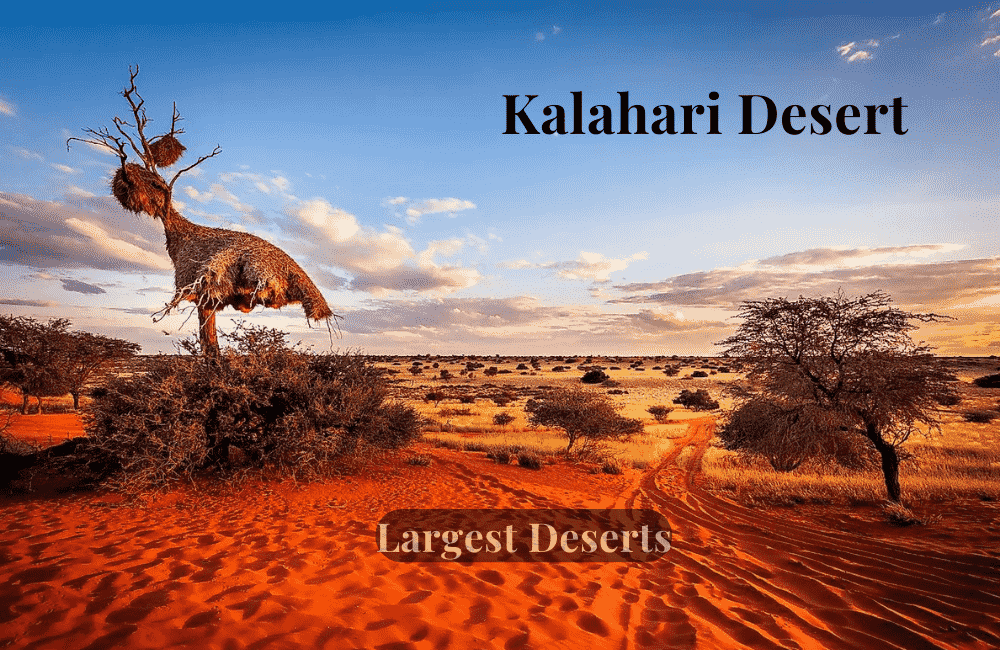
Area (km²): 900,000
Location: Southern Africa
Spanning an extensive 900,000 square kilometers, this desert stands as the seventh largest globally. Nestled in Southern Africa, it blankets the majority of Botswana while extending into portions of Namibia and South Africa.

Area (km²): 620,000
Location: Argentina
This vast desert ranks as the 8th largest globally and holds the title of the largest in South America. It boasts diverse wildlife, including foxes, llamas, and a variety of other species.
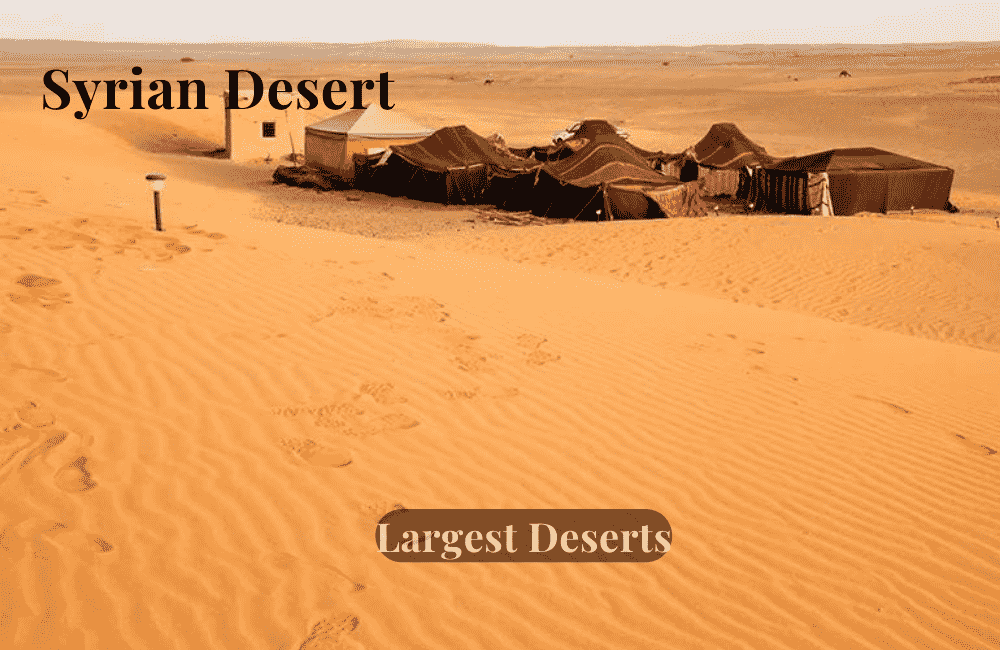
Area (km²): 520,000
Location: Middle East
This desert, the 9th largest globally, is a subtropical expanse with a rocky, barren terrain. It merges with the Arabian Desert in its southern reaches.
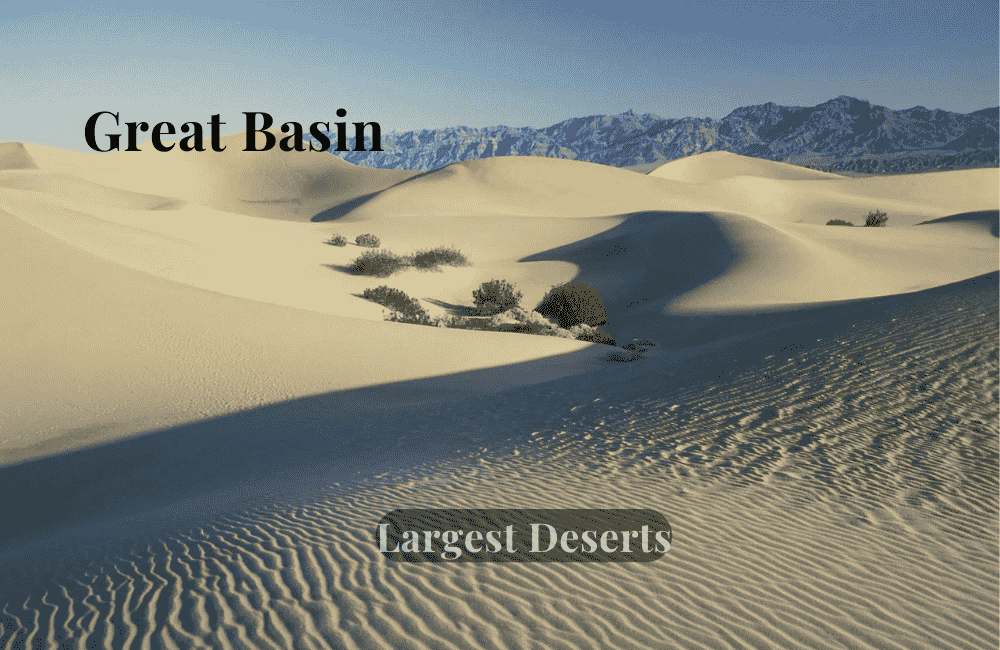
Area (km²): 492,000
Location: United States of America
The Great Basin Desert, situated in central-west Nevada, USA, spans 492,000 sq. km, ranking as the 10th-largest desert globally. It lies between the Sierra Nevada and the Wasatch Mountains and is renowned for hosting the Great Basin National Park in its central region.
Conclusion
Deserts span roughly 33% of Earth’s land, with Polar deserts alone covering about 14.2 million sq. km. The Sahara desert, for instance, extends across approximately 3.3 million square miles. Despite their vast expanse, deserts exhibit low biodiversity. Nevertheless, they are home to unique species of animals and plants found nowhere else, showcasing the adaptability of life in these harsh environments.


